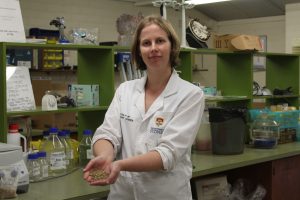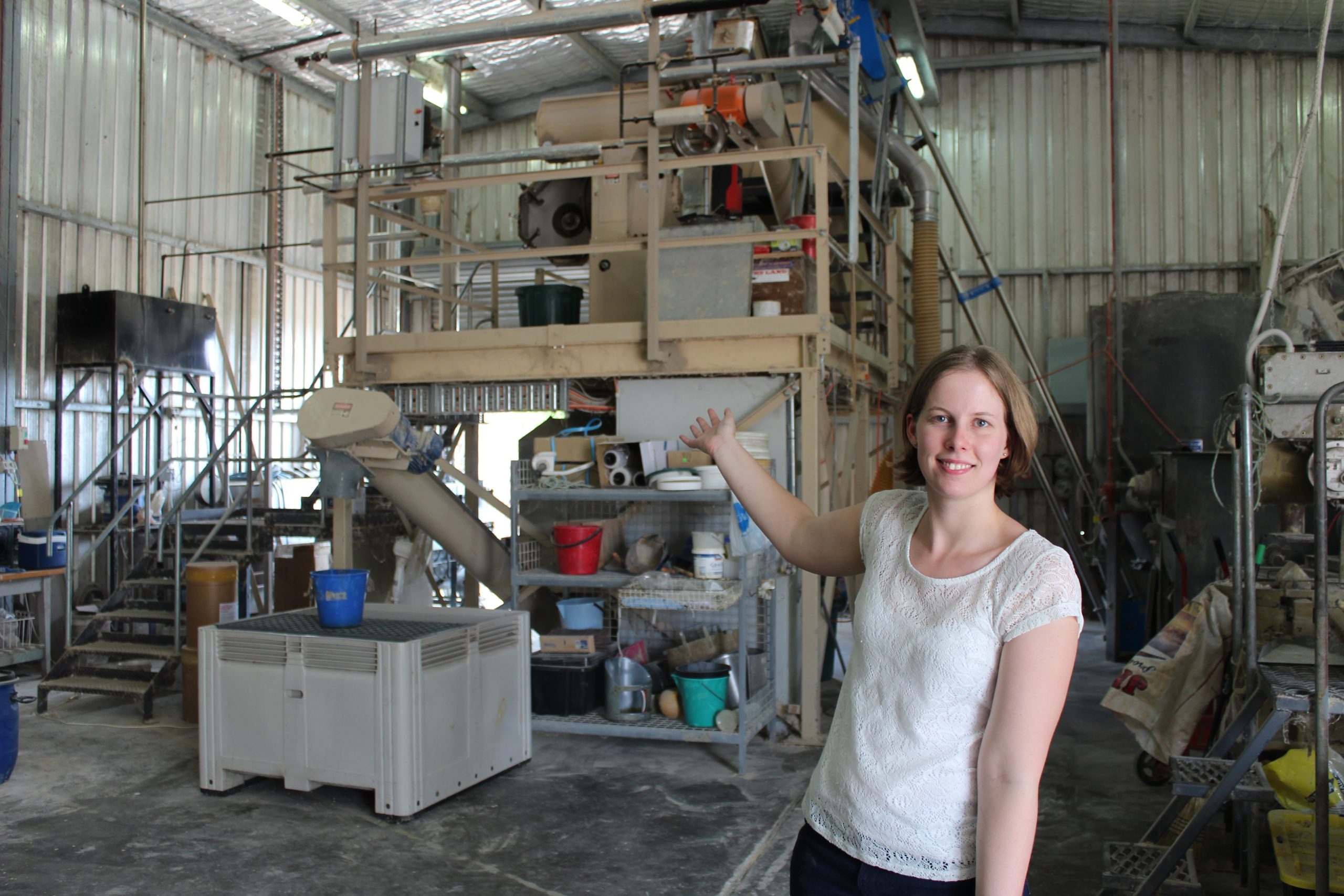Give Chickens Whole Grain and Feed 100 Million People
Adding whole grains to chicken food boosts meat production efficiency and could improve global food security. It’s also likely to be good for backyard chickens, says Sydney scientist Amy Moss.
Amy’s research at the University of Sydney’s Poultry Research Foundation, found that replacing some of the ground grain in chickens’ feed with whole grain both improved their digestion, and how efficiently they produced meat.
The 100 million people figure is a rough estimate that was calculated using the 7.7% increase in feed efficiency I got in my recent whole grain study, and the amount of poultry meat that could be potentially produced from countries that don’t currently use whole grain (America, Africa, Asia), as they could enhance performance with an improved gizzard functionality.

Chicken is a staple of the Australian diet, it’s cheap and nutritious and is our most popular meat. According to a 2011 report from the Australian Chicken Meat Federation 90 per cent of us eat it at least once a week.
“Chicken is cheap and nutritious, which is great news for those of us who love a chicken schnitty. More importantly, these qualities make poultry an impressive candidate for improving food security in developing countries,” says Amy. “Particularly if we can make meat production even more efficient.”
Chickens have a muscular organ called a gizzard in their digestive tract, which grinds the feed they eat so that it can be digested.
“We traditionally feed poultry pellets of finely ground ingredients,” says Amy. “Chickens fed these diets don’t use their gizzards and so these organs get very flabby.”
“If you add more whole grains to chickens’ diets their gizzards get a workout, and just like us when we work out, the gizzard gets more muscle.”
“The beauty of whole grain feeding is it improves efficiency of production without using any additional resources or fancy equipment; simply changing the way the grain is fed to enhance the efficiency of chicken meat production.”
As the fitter gizzard grinds up the feed it stimulates gastric juices which leads to the chicken producing more meat per kilo of feed eaten.
“I found that by replacing 30 per cent of ground grain with whole grain the chickens produced 7.7 per cent more meat per kilo of feed eaten,” says Amy. “And it also reduced the cost of milling and making the feed.”
“If more chickens around the world were fed whole grain, we could meet the protein requirements of roughly 114 million more people, equivalent to the population of Australia nearly five times over.”
Amy hasn’t tested her ideas on laying chickens but it’s likely that they’d also benefit from some whole grain in their diet.
Amy is presenting her research at the 29th Australian Poultry Science Symposium, which starts in Sydney on Monday 5 February.
Amy is currently a PhD candidate at the Poultry Research Foundation at the University of Sydney, where she is researching how to improve poultry performance through better nutrition. Amy’s research has been partially funded by the AgriFutures Australia Chicken Meat program.
Amy was the New South Wales winner of Fresh Science, a national program that helps early-career researchers find and share their stories of discovery.

“The Fresh Science competition is similar to a 3 minute thesis competition except it is for PhD and post-doc students and they also give you two full days of media training. It was a fantastic experience and I highly recommend it!” Amy remarked.
Fresh Science New South Wales was supported by New Scientist, the Australian Museum and the University of New South Wales.


